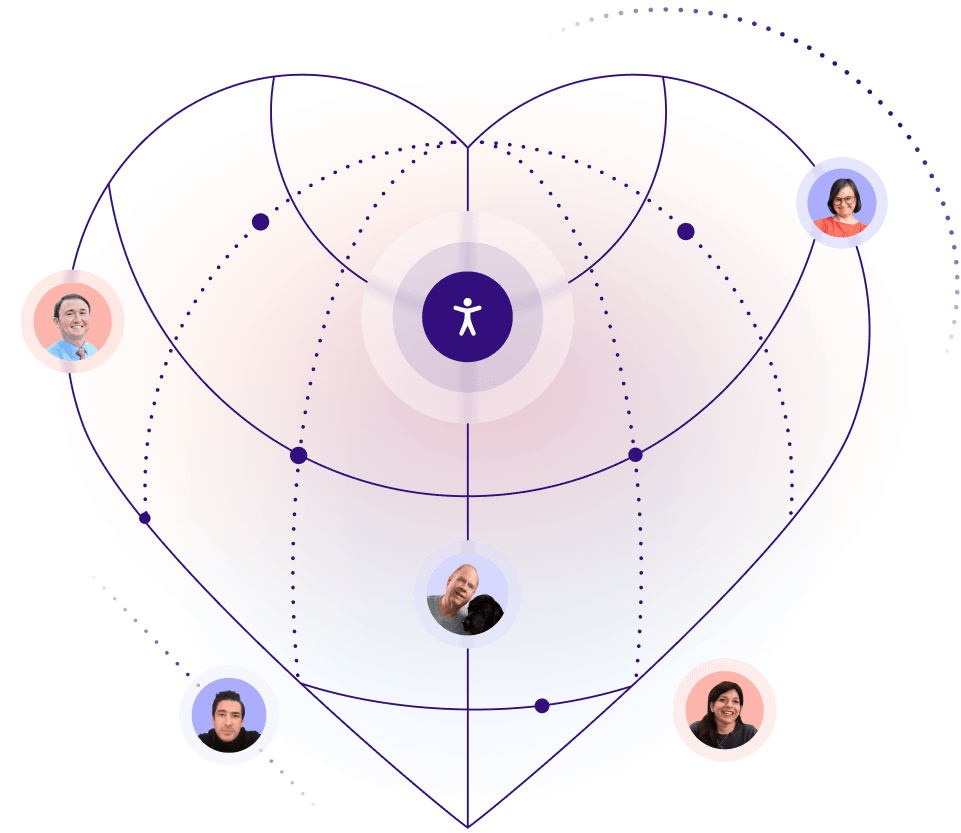July 26, 2025 marks the 35th anniversary of the Americans with Disabilities Act (ADA). This landmark civil rights law transformed the landscape for millions of Americans with disabilities, opening doors that were once sealed shut. But the ADA isn’t just a law from the past—it’s a promise for the future. Here is why the ADA matters more than ever in 2026.
The fight for access and inclusion
When I was 18, a wave at the beach shattered my neck and left me paralyzed below the shoulders. In the years since, I’ve witnessed how the ADA’s framework empowered people like me to participate more fully in society, from accessing public spaces to pursuing careers to navigating the digital world.
We stand on the shoulders of champions like the late Judy Heumann—a friend and mentor of mine, and a tireless disability rights advocate who helped get us where we are today. Judy often reminded us of the harsh reality before laws like the ADA:
"Right there was our catch-22: Because the country was so inaccessible, disabled people had a hard time getting out and doing things — which made us invisible… Until institutions were forced to accommodate us we would remain locked out and invisible."
What does the Americans with Disabilities Act cover?
The ADA prohibits discrimination against people with disabilities in everyday activities—whether that’s applying for a job, riding a bus, entering a school, or accessing a website. It’s broken into several key parts:
- Title I: Employment protections
- Title II: Access to public services and programs
- Title III: Accommodations in public spaces, including private businesses and digital services
Thanks to trailblazers like Judy and many others, the ADA required institutions to accommodate us—tearing down the shameful wall of exclusion. But the ADA didn’t emerge in a vacuum. It was the result of activism, bipartisan leadership, and years of work.
My advocacy story
During law school and before becoming a barred trial attorney, I had the opportunity to work on Capitol Hill for Senator Tom Harkin on the Senate HELP Committee (Health, Education, Labor and Pensions). Senator Harkin—a principal author of the ADA - was tireless in his commitment to disability inclusion. I was inspired to see that nearly every bill coming through his committee was reviewed with a disability lens. He wanted to make sure that people with disabilities were included from the benefits of every piece of legislation.
Those seemingly small decisions create lasting impact - ensuring that accessibility and disability are not afterthoughts but fundamental to how our laws are built.
Later, when I launched my own nonprofit organizations to support others through the disability journey, I made sure to work alongside people with lived experience and diverse perspectives. Collaboration is how true progress has been made over the past 35 years. But a lot has changed since 1990, and the ADA set a floor, not a ceiling.
Digital access: the new frontier of inclusion
Last year, the U.S. Department of Justice issued a new rule requiring state and local government websites and mobile apps to be accessible to people with disabilities. This rule is an important reaffirmation of what many of us already know: the digital world must be accessible.
As a person who uses a screen reader because of both quadriplegia and a reading disability, I depend on thoughtful digital design. I also rely on keyboard navigation and voice dictation to interact with the web. When websites are not designed with accessibility in mind, I can be locked out from even the first page. Drop-down menus can trap me, form fields can be unclickable, and images without alt text can be invisible. These aren’t just design flaws—they’re daily barriers faced by millions.
If digital content is not accessible, it sends the message: "You are not welcome here." That’s not acceptable. Website owners need to do more. People with disabilities are incredibly brand loyal. When we find a business that makes us feel welcome, we come back again and again. That’s the power of accessibility.
The ADA covers digital access, and the DOJ has reaffirmed this repeatedly - but accessibility is not just about compliance, it's a reflection of your brand values. Ignoring accessibility can mean excluding customers, hurting your reputation, and opening the door to litigation.
Accessibility benefits everyone: The business opportunity
You can’t fix what you don’t measure, and most websites still have significant accessibility gaps. The good news is there are tools to help diagnose them.
The first step for any organization is to audit your website’s accessibility and identify barriers.
For example, you can use accessScan for a free, instant report that examines your site and reports issues against standards like WCAG.
For teams looking to build accessible experiences from the ground up, accessFlow is a developer-focused platform that helps detect, prioritize, and resolve accessibility issues throughout the entire web development lifecycle.
accessWidget helps address core WCAG requirements on your website, such as enabling screen reader compatibility and keyboard navigation, through AI-powered auditing and remediation. This tool also emphasizes usability. It allows individuals to customize their digital experience based on their unique needs and the assistive technology they rely on.
As the Community Relations Manager at accessiBe for the past four years, I’ve seen firsthand how organizations can transform their digital presence and brand reputation through a commitment to accessibility. Businesses that lead in this space not only meet the moment—they build customer loyalty, trust, and long-term success.
Looking ahead
The ADA created a legal foundation, but whether it thrives or stalls depends on all of us—and especially on our nation’s businesses. By prioritizing accessibility, businesses welcome in new customers, support equity, and lead by example. If they don’t, they risk excluding a significant portion of the population.
Building accessible digital experiences should start from day one. The best practice is to incorporate accessibility as early as possible, but it’s never too late to improve. Step-by-step and click by click, we will keep moving forward.
Happy 35th Anniversary to the ADA - and here’s to the future we’re building, together.
Frequently asked questions about the ADA
Q1. What is the Americans with Disabilities Act (ADA)?
A1. The ADA is a landmark U.S. civil-rights law enacted in 1990 that prohibits discrimination against individuals with disabilities in employment, public services, public accommodations, transportation and digital access.
Q2. Why is the ADA’s 35th anniversary significant in 2026?
A2. The 35-year milestone marks decades of progress—curb ramps, accessible transit, captioned media—but also serves as a reminder that the journey toward full inclusion isn’t complete, especially in the digital domain.
Q3. How did the ADA reshape accessibility in the physical-world context?
A3. It opened doors—literally and figuratively—by requiring ramps, accessible restrooms, Braille signage, audio announcements, and accessible services in public and commercial spaces, thereby increasing mobility, independence and employment for people with disabilities.
Q4. What does the ADA require for digital accessibility?
A4. Though the ADA doesn’t specify a particular technical standard for websites, applications, or digital assets, courts and regulators increasingly reference Web Content Accessibility Guidelines (WCAG) 2.1 Level AA as the de facto benchmark for accessible digital content—ensuring that websites and apps are perceivable, operable, understandable and robust.
Q5. What are key remaining challenges the ADA highlights in 2026?
A5. Many digital experiences remain inaccessible: websites that trap keyboard users, images without alt text, videos without captions, apps that exclude screen-reader users. These barriers translate into exclusion for the estimated millions of Americans with disabilities—and the ADA sets the expectation of equal access.
Q6. What business or brand opportunities tie into the ADA’s legacy?
A6. Embracing accessibility strengthens user trust, expands market reach (including millions of consumers with disabilities), improves overall user experience, supports better search-engine performance and strengthens brand reputation—all outcomes consistent with the ADA’s inclusion goals.
Q7. How can organisations act in response to the ADA’s 35-year legacy?
A7. Start with an audit of digital and physical assets, prioritise high-impact accessibility fixes (navigation, media, contrast, alt text), embed inclusive design in workflows, monitor accessibility over time, document efforts and treat accessibility as a continuous business-practice rather than a one-off project.
Q8. How can organizations advance accessibility while aligning with the ADA’s vision?
A8. Implement tools and services that support accessibility testing, remediation, monitoring and documentation; build inclusive design into your product lifecycle; engage users with disabilities for feedback; and view accessibility not just as compliance, but as a strategic advantage.


